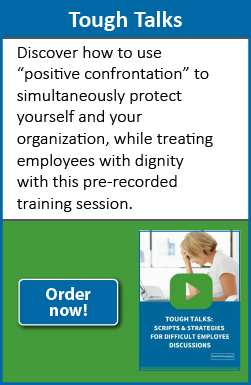Is your SOP manual clear enough for everyone?
How do you know your SOP manual, while being perfectly clear to you, is also clear to everyone else who might need to consult it—including people who don’t have your experience, institutional knowledge or understanding of key details?
Let’s look at some good examples of standard operating procedure manual techniques … and some bad ones.
SOP section introductions
Bad:
To put the annual brochure together, ask Sharon what you’ll need. She will provide you with all the materials.
Good:
To put the annual brochure together, you will need:
- A schedule and project file as provided by the project manager
- Access to the file “Marketing Brochures” on the D: drive
- The physical photo file stored in the Marketing cabinet
As of June 2019, Sharon Burling is a good resource for any problems you might encounter.
Every procedure should be written as if no one is available to assist; the procedures manual itself needs to do the heavy lifting! List and describe all the resources and materials that will be used.
Feel free to “name-drop” employees if they can help, but make sure to alert the manual user as to how recent your observation about their availability and usefulness is. You don’t want to send someone to Sharon if since the last time someone consulted her, she’s become way too busy with other things to help out.
Subject headers
Bad:
- Copier
- Archiving
- Minutes
- Reports
Good:
- How to Process Outgoing Mail
- Using and Fixing the Copier
- Archiving Documents on the Network
- Taking Meeting Minutes
- Steps to Prepare End-of-Quarter Reports
Get specific where you can about exactly what the manual user is looking for. Words like “mail” or “reports” can mean too many things.
Process descriptions
Bad:
Put all marketing files on the F: drive when they’re done. The folder in there is called Price Grid. There’s a subfolder for every year and type. First, make sure to name it after whatever the project is.
Good:
To archive completed files:
- Give each a name signifying which project they belong to.
- Move the file to F:\Marketing\Price Grid
- Within this archive, select the proper project year.
- Choose one of the three subfolders describing the project’s current status:
- New
- Old
- Ongoing
Move sequentially through your process, and when describing its steps, always use bullet points and subdivisions to “stack” them. It’s easier to see the logic this way, and easier to remember.
Use bold or italicized type for emphasis and to highlight more important parts of the process.
SOP manual instructions
Bad:
Outgoing mail has to be in the bin by 4:00. If not, it has to be taken to Mr. Wallace. Make sure nothing is creased.
Good:
Outgoing mail has to be in the bin by the time the USPS carrier arrives, at 4:00. If this deadline is missed, it has to be taken to the mailroom supervisor (Mr. Wallace as of March 2018). Make sure nothing is creased, as creased letters will jam the sorter and cause delays or possibly even necessitate a complete reprint of the damaged material.
What we’ve done here is put context into the user’s mind. Now he or she understands just why there’s a 4:00 deadline, and what the ramifications of creased letters are. It’s also explained what Mr. Wallace’s significance is, so if he should leave, it’s understood that the person to see is the next mailroom supervisor, not just anyone.
Wording your SOP manual
Bad:
Using the old system to merge spreadsheets will not work if the data hasn’t been reformatted. Use the new system instead.
Good:
Using the old system (retired as of May 2017) to merge spreadsheets will not work if the data hasn’t been reformatted. Use the new system (effective October 2018) instead.
The words “old” and “new” have no meaning in a fluid document like a standard operating procedures manual. Use real dates and times to put everything into its proper time frame and assure the reader that they have the best information available.
Explain the reason behind a standard procedure
Bad:
Accounting doesn’t want the admin team contacting legacy clients, even for address confirmations. If you need to do so, submit a request to Accounting via email.
Good:
As of September 2018, Accounting doesn’t want the admin team contacting legacy clients because of the confusion it causes as to who their best information source is. If you need to do so, submit a request to Accounting via email.
What the second example does is reaffirm the reasoning behind a procedure. Every time we learn a new procedure, we instinctively consider shortcuts. Make sure people understand the logic behind a seemingly illogical procedure so they aren’t tempted to work around it and cause a problem. Why wouldn’t an admin be able to simply ask for an address? Well, here’s it’s explained why.
Avoid assumption when creating your standard operating procedure
The common theme around the above tips is the avoidance of assumptions. Is your binder really helping someone do the job, or just giving them a slight push and hoping for the best?




